These recent weeks have been full of personal landmarks:
- On August 27, I was allowed to starting putting weight back on my broken leg (in other words, I started learning how to walk again).
- On October 9, I played my first live in-person gig since the pandemic started, with a revamped “first step toward hybrid” system.
- During the weekend of October 16/17, I recorded my first new piece in my rewired studio (and shot video of it, to be premiered during SoundMiT 2021).
- And as I write this, I am preparing to fly to Dublin, Ireland (my first travel since breaking the leg) to speak at a Dublin Modular event on November 5.
This is all admittedly a bit early for where I am on my recovery curve, but it gave me a series of goals to work towards to make sure I didn’t slack off on my physical therapy and overall recovery. And I’m glad I pushed myself that hard. More details below:
- featured article: What features do I wish more modules would include?
- new videos and posts: Sharing another Alias Zone performance as well as my first Patreon “Ask Me Anything” talk on my Learning Modular channel; a public Patreon post on the origins of the Oberheim SEM.
- Patreon updates: The index to my most recent “Ask Me Anything” session (plus registration for the next one); deep articles on my studio re-wire; sharing my plans to move my “gigging modular” toward a hybrid system.
- upcoming events: A talk at Dublin Modular, an interview on GEOSynth, and the premiere of a new piece at SoundMiT.
- one more thing: A few links about music & healing.
Wishing for Musical Intelligence in Modules
On a recent “Ask Me Anything” webcast, Kim Bjørn of Bjooks asked me what features I would like to see in new modules. A few standard answers popped to min: attenuverters on each CV input; front panels that put user friendliness above symmetry or a grid; etc. But what I really want is for modules to know where the “one” is, and in general to be more rhythmically and musically intelligent.
Although there is certainly a lot to be said for experimental music forms that give all pitches and timings the same importance, the reality is a lot of music we relate to follows some informal rules that have developed over time – such as placing emphasis on the downbeat (the first beat in a measure), and with certain stylistic connotations for how you treat the rest of the beats in a measure (such as swing, a backbeat, fills at the end of a measure leading into the downbeat of the next one, etc.).
For this to happen, a module would need to have either a clock or a reset input. Clock signals are more common in a modular system, but would require a module to be able to count, and know the time signature and rhythmic division of the clock. A “this is an important beat” reset might be easiest to support, and isn’t too hard to patch using a sequencer or a trigger pattern generator.
Here are just a few ideas of what could be done with this include:
- “Tap Tempo” LFOs that can actually hit the downbeat, rather than merely modulate at the same speed as the clock. As part of that, a musically intelligent LFO should have a phase offset, so you could decide which part of the LFO waveform lines up with that downbeat: For example, with a sine or triangle wave, I might prefer the downbeat to line up with the very highest point of that waveform, rather than the zero crossing.
- LFOs that could swing. Imagine that instead of “wah wah wah wah wah wah” you could get a “wa-waah wa-waah wa-waah” pattern out of your LFO – how funky would that be?!?
- Probability skippers for trigger patterns that didn’t skip the downbeat.
- Random trigger generators that hit the downbeat, but also gave off-beat triggers in between (see: Burial).
- Envelope generators, LFOs, or even VCAs that knew to be just a little bit louder or provide deeper modulation on the downbeat.
- Drum machines (or even sample players) that knew if you were playing a sound backwards, maybe you want the sound to end on a beat, instead of start there and end randomly. (Sample players know how long it’s going to take to play the sample you have loaded; they could look at the timing of the beats, and back-time the start of a sample to hit when you wanted. This would be easiest in drum machines; a sample player module would need some good integration with a sequencer or pattern generator to reliably pull that off.)
Now, I admit that since I used to play bass guitar and percussion, I’m particularly sensitive to these rhythmic hits. However, the idea of musical intelligence could be extended to the pitch realm as well – such as sample & hold/quantizer combinations that know that not all musical intervals are treated equally in most musics.
One module that already meets this criteria is the Five12 Vector sequencer, which has Generate and Evolve functions. Generate has a series of algorithms that intelligently fill out your sequence with note values that fit the tonal scale and root you’ve specified, following stylistic rules set by the algorithm you chose. Evolve takes an existing sequence, and offsets some of the notes again based on the scale and root plus the original value of the note – I used to extensively to create an “improvised solo” on my most recent piece (see: SoundMiT, below) where I would hit the Evolve button when I felt it was time for a change in the pattern.
Overall, modular synths are becoming mature enough now that we can evolve beyond the “I wonder what this circuit would sound like? And can someone can make music with that?” approach, and increasingly toward “we know how a lot of music is made – let’s help the user make it.” Of course, leave open that door to go off the pitch & timing grid and do whatever you want…but maybe also truly become our partners in creating music, when we want.
New Videos & Blog Posts
As I’ve been mentioning, I upload my latest music to my Alias Zone YouTube channel first. However, my older, more established Learning Modular channel has a much larger following – so I’m uploading more videos to that channel as well, several months after they’ve been released on the Alias Zone channel. The most recent one I uploaded is Four O’Clock – Raining (shown above), which was an uncharacteristically upbeat piece I created for the grand Modular World First Anniversary show earlier this year.
I’ve been really happy with how my Patreon “Ask Me Anything” sessions have been turning out. So much so, that I wanted to share them with a wider audience. I asked my patrons for permission, and they’ve agreed to let me share the playback of these sessions a few months after the original live stream. For this public airing, I’ve renamed them “Learning Modular Conversations” as each one has focused on a conversation with my different co-host that month. The one above was the first such session, with the wonderful Trovarsi as my co-host. (My Patreon subscribers will continue to be the ones invited to the live stream so they can participate and ask questions.)
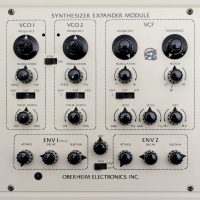
(Photo of SEM by Peter M. Mahr)
Patreon Updates
In addition to the article on the SEM mentioned above, I created several other posts for my Patreon subscribers last month:
- The video replay with per-topic linked index of my October “Ask Me Anything” session with Kim Bjørn of Bjooks (available to all levels of subscribers).
- Pre-registration and a sneak peek of the topics we’ll be discussing for my November “Ask Me Anything” session – Australian edition! – with Steve Turner of Australian Control Voltage (AU-CV). This one will air live at a time more convenient for those in the Asian and Australian region also available for all subscription levels).
- Two detailed posts on my recent studio rewiring adventure, including how I chose the audio interfaces (and support equipment) I used, as well as the intricacies of making a multi-interface AVB system work on macOS. (An additional installment about how the AC mains power affects this system will appear during November. All are available to +5v level and above subscribers.)
- The “board recording” of my most recent live performance, including some thoughts on how I’m evolving my live system to better match the “sound” and workflow of my studio system (also available for the +5v level and above).
Upcoming Events
I will be part of a number of streaming events during November, including:
November 5: Dublin Modular (7-10 PM Irish Standard Time, Dublin, Ireland)
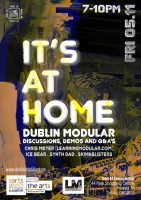
To learn more about Dublin Modular and all of these events, visit DublinModular.com. The November 5 event I will be part will also stream live on YouTube; click here to set a reminder or watch it later.
November 11: GEOSynths Synth Show (11 AM PST, 2 PM EST, 7 PM GMT, 8 PM CET)
I will be Jamie Morden’s guest on his weekly GEOSynths webcast, where we’ll be talking about sound design in addition to other issues. It will appear on the GEOSynths YouTube channel.
November 13-14: SoundMiT (streaming online from Turin, Italy)
I am scheduled to be one of the performers for this year’s virtual edition of SoundMiT, where I will be premiering a brand-new piece called Iceland. As of the time I am writing this, I don’t know precisely when I will be on; I’ll update the Alias Zone web site and sharing on social media once I know more.
November 13-14: Patreon “Ask Me Anything” Australian/Asian edition with co-host Steve Turner (November 13 at 5 PM EST / 8 PM PST; November 14 at 1 AM GMT / 2 AM CET; noon AET)
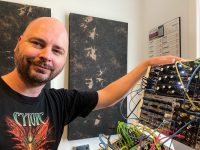
The live version of this event will be for Learning Modular Patreon subscribers as well as members of AU-CV; you will have received registration instructions through your respective communication channels.
One More Thing…
Recently, a good friend of mine has been looking into the connection between music and healing. She received a message from someone who said they had to skip her live performance because they were suffering a migraine headache at the time, but when they listened to the streamed version, they were surprised that their headache cleared up as she played!
After a little research, I found that even aspirin manufacturer Excedrin had posted on their web site about how music can relieve head pain, and linked to a clinical trial about how “the sound trance” led patients to report “less days at which they suffered from headaches; and they also significantly improved their ability of pain control.” The same piece also links to an article on how “music listening is associated with both pain- and stress-reducing effects.”
If you want to experiment with the suspected links between specific frequencies and listener reactions in your own music, a member of DivKid’s Discord channel led me to this extensive list of the effects of different frequencies. That list included the “Solfeggio frequencies” which, according to several sources, are said to be part of an ancient music scale used in sacred music such as Gregorian Chants. Here is a link to an article that explores the science behind them, with numerous references to explore (including a YouTube playlist).
I know a few people will go “Chris – you realize this is all fantasy, right?” I’m not suggesting this is a universal truth. But I am reminded of one of my favorite Zuni Indian sayings: “If you believe, then the medicine is strong.”
After I return from speaking at Dublin Modular, I’m going to be diving into finishing a new album based on water themes and sustained harmonic environments (including the recent piece Shipwrecked and the new piece I’ll be premiering at SoundMiT). Part of my “homework” before finishing that album will be improving my mixing skills, specifically in the area of reverb and ambience: I’ve been going for what “sounds good” on each patch and piece, while some of my mentors have been encouraging me to go for a more unified sound. Wish me luck!
warmest regards –
Chris

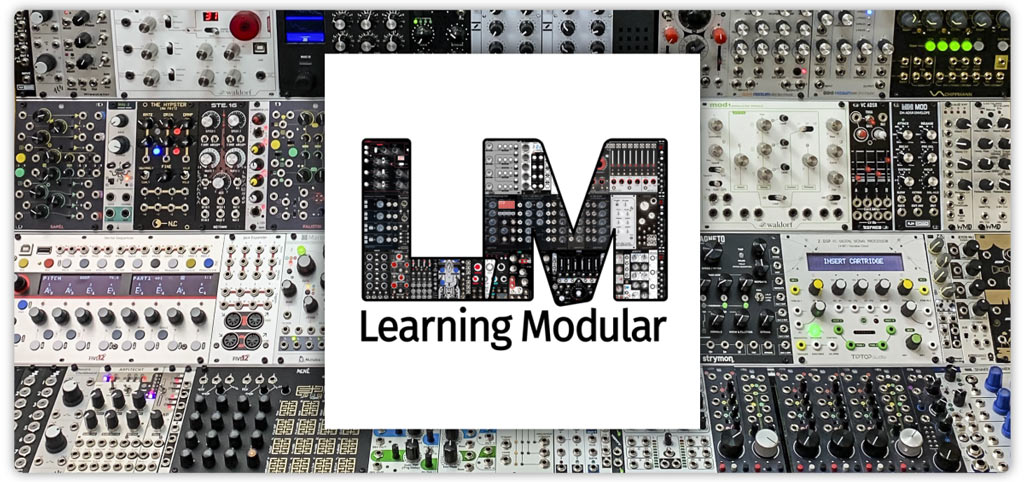

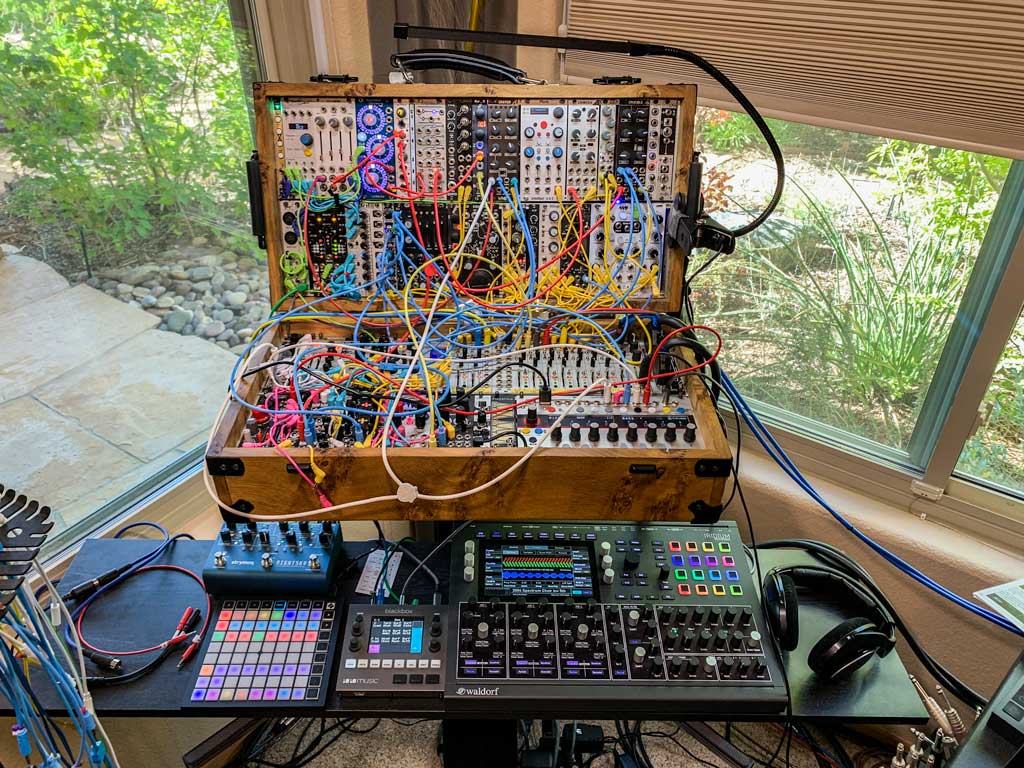
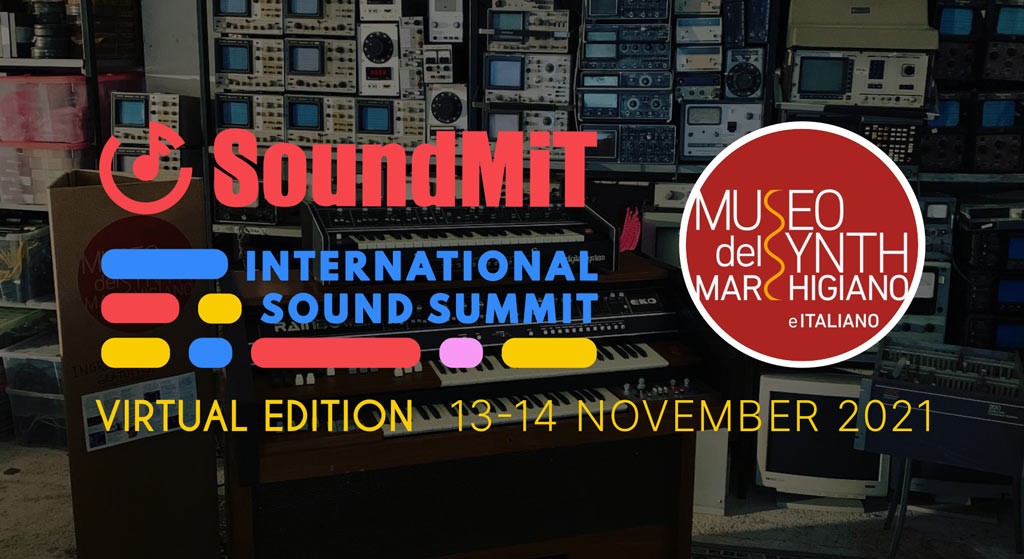

Hi Chris,
Great article and so sorry to hear about your leg break injury and I can relate. Vector 512 is a great sequencer and been using mine. Another module that has many similar qualities with shaping LFOs and so forth is the wonderful Acid Labs Maestro that provides six channels of modulation and shaping LFO patterns and so forth. Plus you can create presets and recall for later playback. So useful.
‘Of course, leave open that door to go off the pitch & timing grid and do whatever you want…’ (Article: Wishing for Musical Intelligence in Modules).
Bonjour Chris,
Yes, and this is the important question of musical interpretation too: what will distinguish for the same work Leonard Bernstein from Pierre Boulez, or two different visions by the same artist (one of the most famous examples being The Goldberg Variations by Glenn Gould in 1956 then in 1982).
In the field of controllers and expression means, modular synths can still innovate a lot: in the transcription of human nuances for all musical parameters: pitch, timing, but also dynamics and therefore volume, timbre (this allowed the fortepiano to succeed the harpsichord), spacialization, etc.
Thank you for your work for the benefit of all.
I view dynamics, changes in amplitude, as the single most important aspect of music making. When I conceive of any sound, it is the attitude of that sound I begin to engage with. That attitude is best described by its amplitude. Everything else is in support of that. But that dynamic shape is organic and continually changing like a long non-periodic and asymmetrical wave, often climbing or falling subtly, sometimes dramatically shifting its direction, sometimes starting loud and getting soft, sometimes barely on the threshold of hearing.
In VCV I can create this using about 20-30 modules. I’d really like to know how to do this in the most efficient manner but mostly in a manner that is musically satisfying.
I talk about this a bit on the Learning Modular Patreon channel – both in track breakdowns about how I’m patching and using it for individual pieces, and also a few general articles on generative synthesis. Here’s the link to the index; it’s the +5v and above levels that get access to all of the articles: https://www.patreon.com/posts/learning-modular-23481757